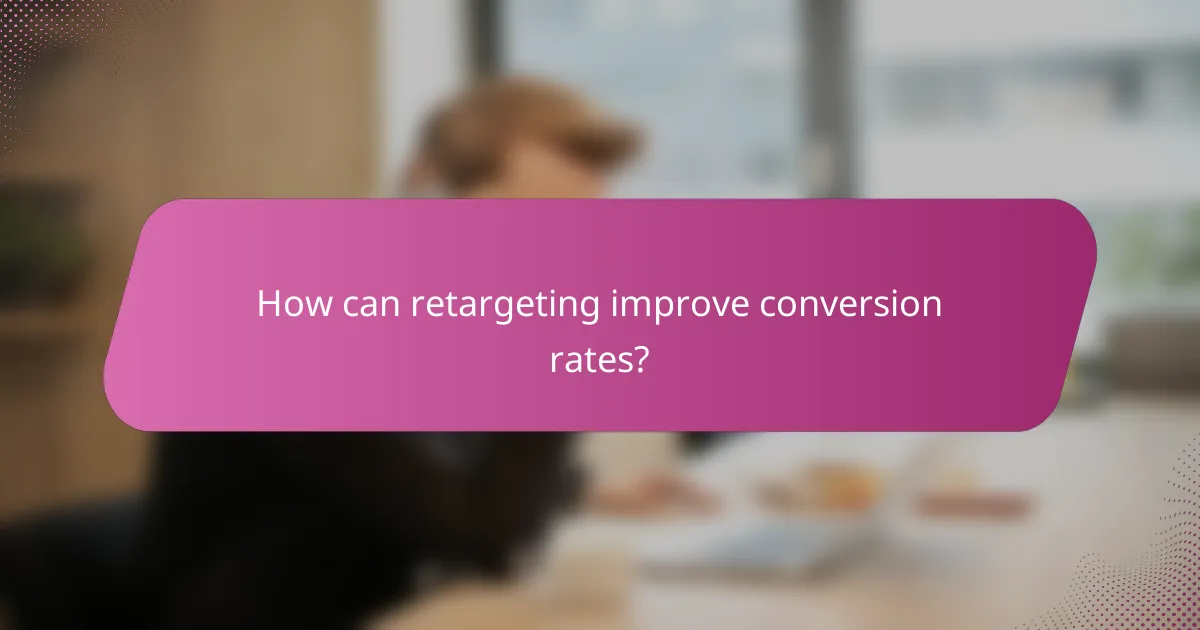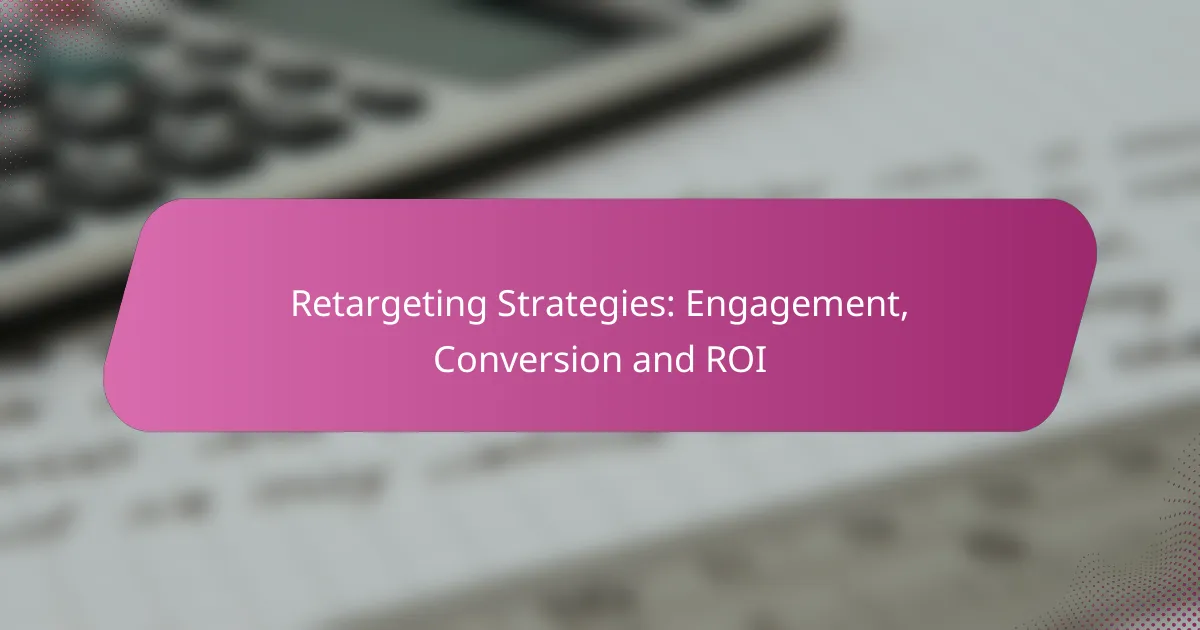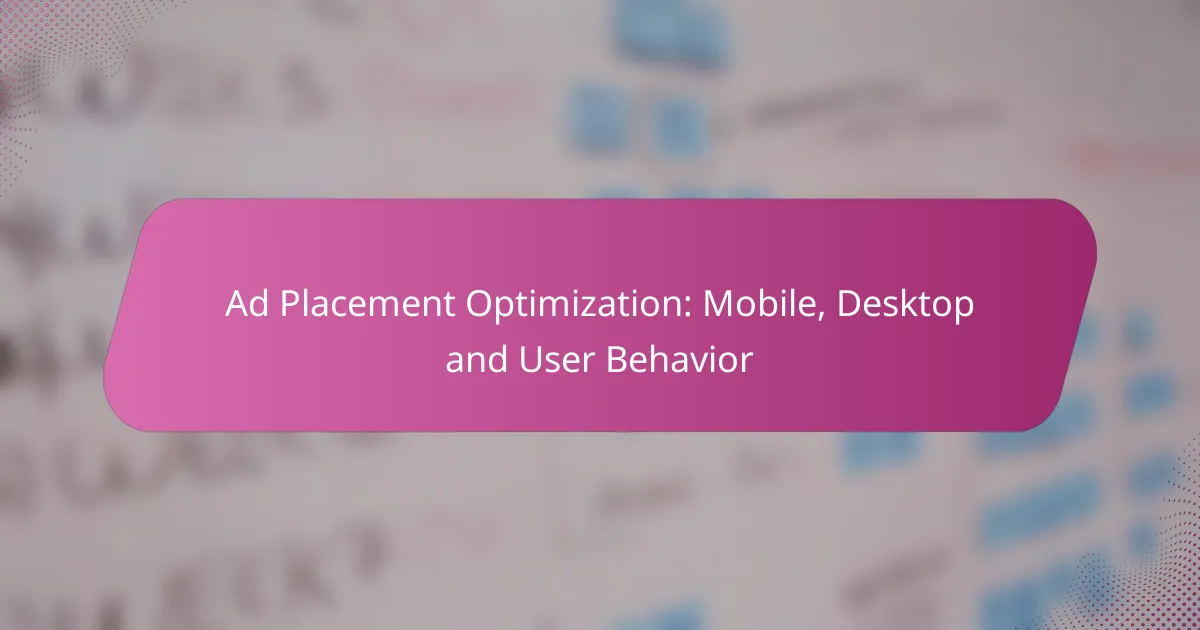Retargeting strategies are essential for re-engaging users who have previously shown interest in your brand, effectively guiding them back to your website or products. By focusing on enhancing conversion rates, these strategies remind potential customers of their initial engagement, encouraging them to complete their purchases. To measure the success of these efforts, it’s crucial to analyze key performance indicators such as cost per acquisition, return on ad spend, and click-through rate, which provide valuable insights for optimizing your campaigns.

What are effective retargeting strategies for engagement?
Effective retargeting strategies for engagement focus on re-engaging users who have previously interacted with your brand. These strategies aim to remind potential customers of their interest, ultimately guiding them back to your website or product.
Dynamic product ads
Dynamic product ads automatically showcase products that users have previously viewed or expressed interest in. By using data from user behavior, these ads can display personalized content that resonates with individual preferences, increasing the likelihood of conversion.
To implement dynamic product ads, ensure your product catalog is up-to-date and linked to your advertising platform. Consider using platforms like Facebook or Google Ads, which offer tools for creating these personalized ads efficiently.
Personalized email campaigns
Personalized email campaigns target users based on their previous interactions with your brand. By sending tailored messages that reflect their interests, you can significantly boost engagement rates.
When crafting these emails, segment your audience based on their behavior, such as abandoned carts or product views. Use compelling subject lines and clear calls to action to encourage recipients to return to your site.
Social media retargeting
Social media retargeting involves displaying ads to users on platforms like Facebook, Instagram, or Twitter after they have visited your website. This strategy keeps your brand top-of-mind and encourages users to revisit.
To maximize effectiveness, create visually appealing ads that highlight specific products or promotions. Utilize audience insights to refine targeting, ensuring your ads reach users who are most likely to engage.
Sequential retargeting
Sequential retargeting delivers a series of ads in a specific order to guide users through the buying journey. This method helps build a narrative around your brand, increasing the chances of conversion.
Consider creating a sequence that starts with brand awareness, followed by product highlights, and concludes with a strong call to action. Monitor user engagement with each ad to adjust the sequence as needed for optimal results.
Cross-device retargeting
Cross-device retargeting allows you to reach users across multiple devices, ensuring a consistent brand experience. This strategy is crucial as users often switch between devices during their purchasing journey.
To implement this, use a retargeting platform that tracks user behavior across devices. Tailor your messaging to suit each device’s context, such as mobile-friendly ads for smartphones and more detailed content for desktops.

How can retargeting improve conversion rates?
Retargeting can significantly enhance conversion rates by re-engaging users who have previously interacted with your brand. By reminding potential customers of their interest, you can guide them back to complete their purchases or take desired actions.
Abandoned cart reminders
Abandoned cart reminders are a powerful retargeting strategy that targets users who added items to their cart but did not complete the purchase. These reminders can be sent via email or displayed as ads, encouraging customers to return and finalize their transactions.
To implement this effectively, consider timing your reminders within a few hours to a day after the cart abandonment. Offering a small incentive, like a discount or free shipping, can also increase the likelihood of conversion.
Lookalike audience targeting
Lookalike audience targeting allows you to reach new users who share similar characteristics with your existing customers. By analyzing data from your current audience, you can create profiles that help identify potential customers who are likely to engage with your brand.
To maximize effectiveness, ensure your source audience is well-defined and consists of high-value customers. This approach can lead to a higher conversion rate as these new users are more likely to respond positively to your marketing efforts.
Exclusive offers for return visitors
Offering exclusive deals to return visitors can significantly boost conversion rates by making customers feel valued. These offers can be presented through personalized ads or emails, highlighting special discounts or promotions available only to them.
Consider using urgency in your messaging, such as limited-time offers, to encourage immediate action. This strategy not only incentivizes return visits but also fosters customer loyalty and repeat purchases.

What metrics should be used to measure ROI in retargeting?
To effectively measure ROI in retargeting, focus on key performance indicators such as cost per acquisition (CPA), return on ad spend (ROAS), and click-through rate (CTR). These metrics provide insights into the efficiency and effectiveness of your retargeting campaigns, helping you optimize your strategy.
Cost per acquisition (CPA)
Cost per acquisition (CPA) measures the total cost of acquiring a customer through retargeting efforts. This metric is calculated by dividing the total spend on retargeting by the number of conversions achieved. Keeping CPA low is crucial, as it directly impacts profitability.
For example, if you spend $500 on a retargeting campaign and acquire 10 customers, your CPA would be $50. Aim for a CPA that aligns with your profit margins to ensure sustainable growth.
Return on ad spend (ROAS)
Return on ad spend (ROAS) evaluates the revenue generated for every dollar spent on advertising. It is calculated by dividing the total revenue from retargeted customers by the total ad spend. A higher ROAS indicates a more effective retargeting strategy.
For instance, if your retargeting campaign generates $2,000 in revenue from a $500 ad spend, your ROAS would be 4:1. Strive for a ROAS of at least 3:1 to maintain a healthy return on investment.
Click-through rate (CTR)
Click-through rate (CTR) measures the percentage of users who click on your retargeting ads compared to the total number of impressions. A higher CTR indicates that your ads are engaging and relevant to your audience. It is calculated by dividing the number of clicks by the number of impressions and multiplying by 100.
For example, if your ad receives 100 clicks from 10,000 impressions, your CTR would be 1%. Aim for a CTR of 1-3% as a benchmark for effective retargeting ads, adjusting your creative and messaging based on performance data.

What are the prerequisites for successful retargeting?
Successful retargeting requires a well-planned strategy that includes effective pixel implementation, audience segmentation, and creative asset preparation. These elements work together to ensure that your retargeting campaigns effectively engage users and drive conversions.
Pixel implementation
Pixel implementation involves placing tracking pixels on your website to collect data on user behavior. This data is crucial for identifying which visitors to retarget based on their interactions with your site. Ensure that the pixel is correctly installed on all relevant pages to capture comprehensive user activity.
Common platforms like Google Ads and Facebook Ads provide detailed guidelines for pixel setup. Regularly test the pixel functionality to confirm that it is tracking accurately, which can help avoid wasted ad spend on ineffective targeting.
Audience segmentation
Audience segmentation is the process of dividing your audience into specific groups based on their behavior, interests, or demographics. This allows for more tailored messaging that resonates with each segment, increasing the likelihood of conversion. For example, you might create segments for users who abandoned their shopping carts versus those who viewed specific products.
Utilize tools like Google Analytics or Facebook Audience Insights to analyze user data and create segments. Remember to regularly update your segments based on changing user behavior to maintain relevance and effectiveness in your campaigns.
Creative asset preparation
Creative asset preparation involves designing engaging ads that capture the attention of your segmented audience. Use eye-catching visuals and clear calls to action that align with the interests of each audience segment. For instance, retargeting ads for users who viewed a product should feature that product prominently.
Consider A/B testing different creative assets to determine which designs and messages perform best. Ensure that your ads are optimized for various devices, as many users access content via mobile. Keep your branding consistent across all assets to strengthen recognition and trust.

How does retargeting differ across platforms?
Retargeting varies significantly across platforms in terms of audience targeting, ad formats, and overall effectiveness. Each platform offers unique tools and strategies that can influence how businesses engage with potential customers who have previously interacted with their brand.
Google Ads retargeting
Google Ads retargeting allows businesses to reach users who have visited their website or used their mobile app. This platform utilizes cookies to track user behavior, enabling advertisers to display tailored ads across Google’s extensive network, including search results and partner sites.
When implementing Google Ads retargeting, consider segmenting your audience based on their interactions. For example, users who abandoned a shopping cart may respond well to specific product ads, while those who merely browsed can be targeted with broader brand messaging. Setting a frequency cap can help avoid ad fatigue.
To maximize effectiveness, use compelling visuals and clear calls to action. Regularly analyze performance metrics such as click-through rates and conversion rates to refine your strategy. Avoid common pitfalls like targeting users who have already converted, as this can waste budget and reduce overall ROI.



